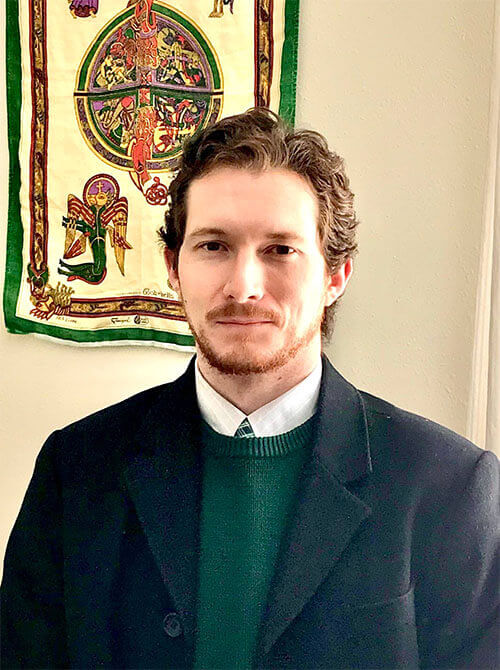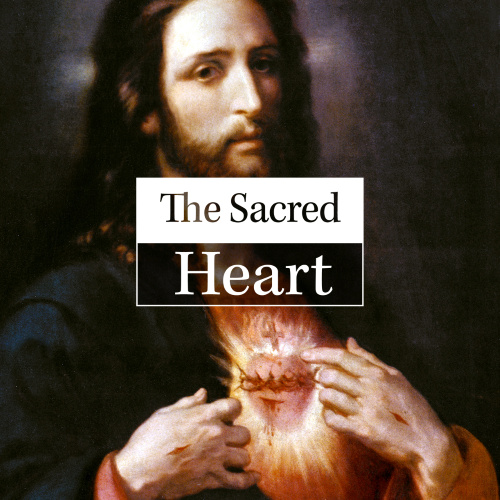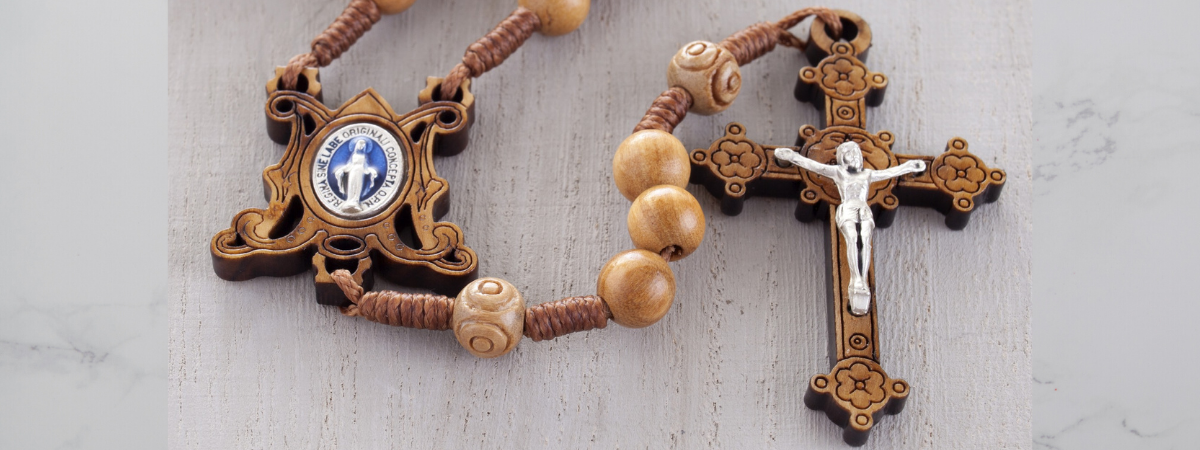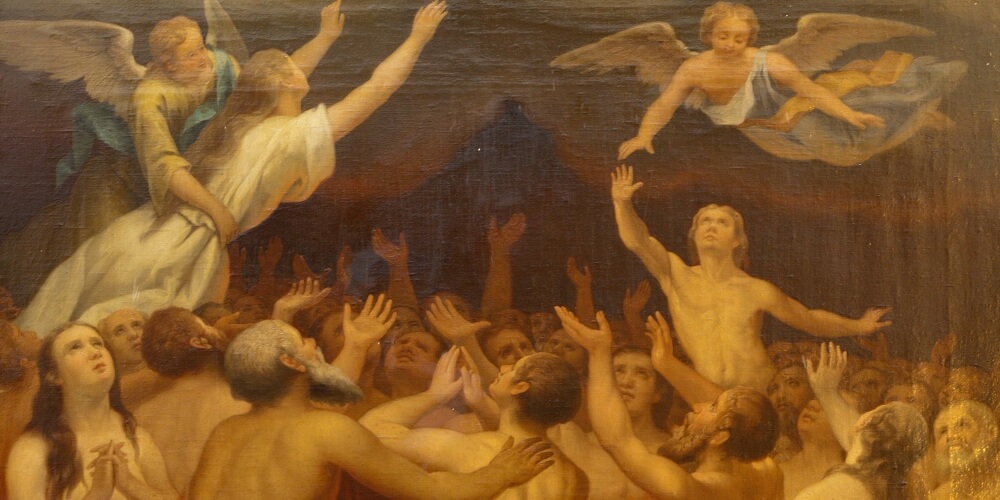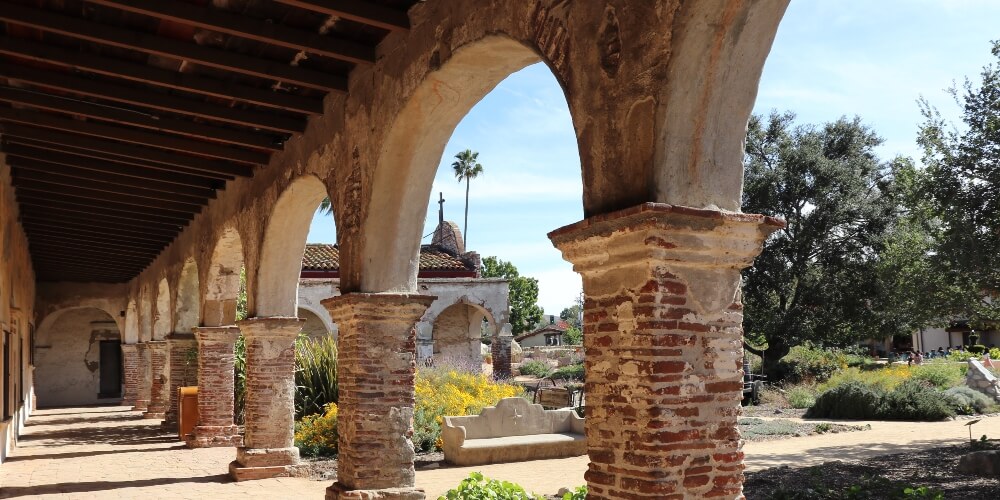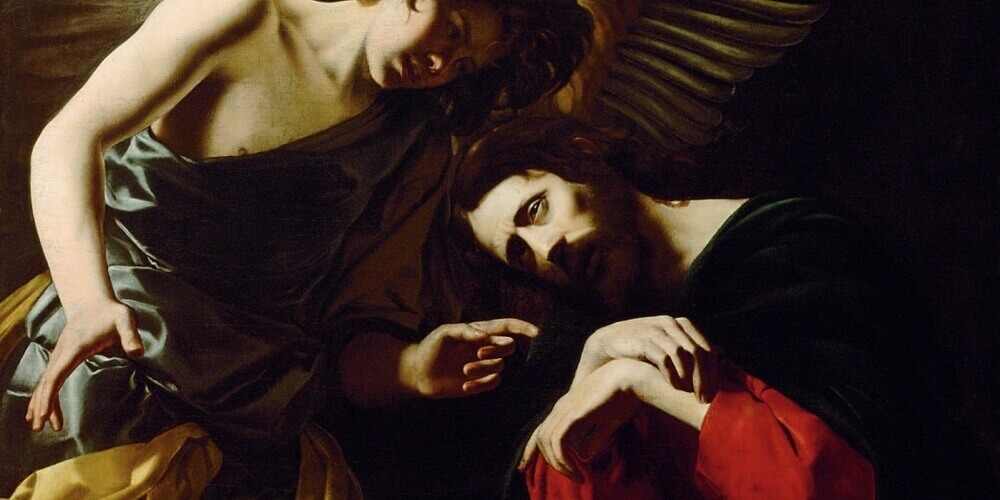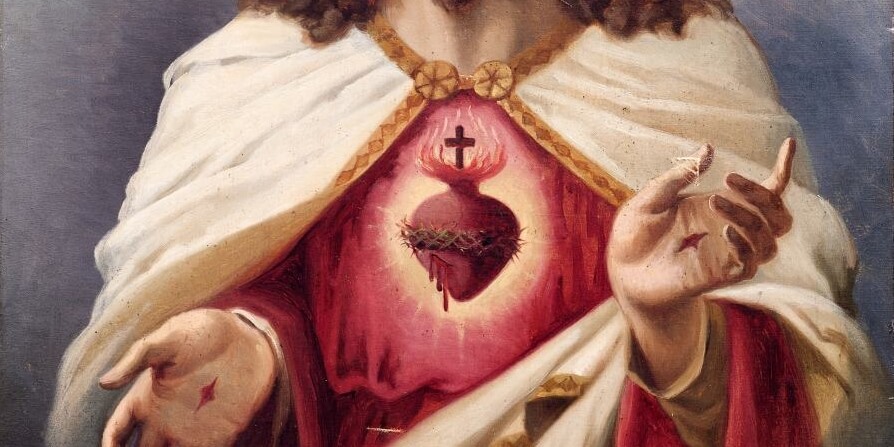
For God so loved the world, as to give his only begotten Son; that whosoever believeth in him, may not perish, but may have life everlasting.
John 3:16
Do you know why the whole month of June is dedicated to the Sacred Heart of Jesus?
Many Catholics are aware that the Feast of the Sacred Heart is in this particular month, but why is this feast front and center in a month which is filled with so many other magnificent feast days?
Three Significant Events and the Sacred Heart
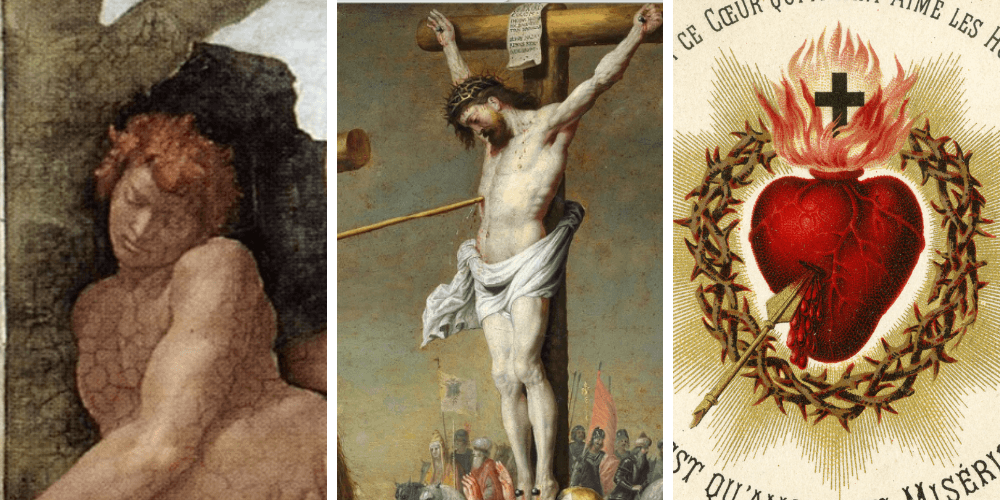
There are three momentous, yet seemingly-distant events in history that shed some light on why a whole month is dedicated to the Heart of Christ.
First event: at the dawn of creation, God established the foundations of the earth, brought forth the trees and animals, and finally made Man in His own image and likeness. Placing Adam in the garden of paradise, the Creator charged him to maintain stewardship over all that He had made. And yet, in all the various living things that the Almighty had designed, Adam found none capable of assisting him in his God-given tasks. There was no one like himself. Seeing this, God cast Adam into a heavy slumber.
Second event: after the fall of man, the human race saw unsurpassed pain and anguish on a rocky hill in Palestine. Unknown to the world, except to a favored few, Jesus of Nazareth had just been tortured to death. Requiring proof of His death, the centurion on duty ordered that the Divine Body be stabbed with a spear. Christ was dead already, but the thrust was intended to make certain of it.
Third event: sixteen hundred years after the crucifixion of Jesus, an obscure nun from a humble background approached the high courts of the most powerful country in all of Europe, seeking an audience with the ruler of the land. Her quest was not to beg the king of France for favors, but to deliver a pressing message from heaven which required that he follow explicit instructions.
What’s the Connection?
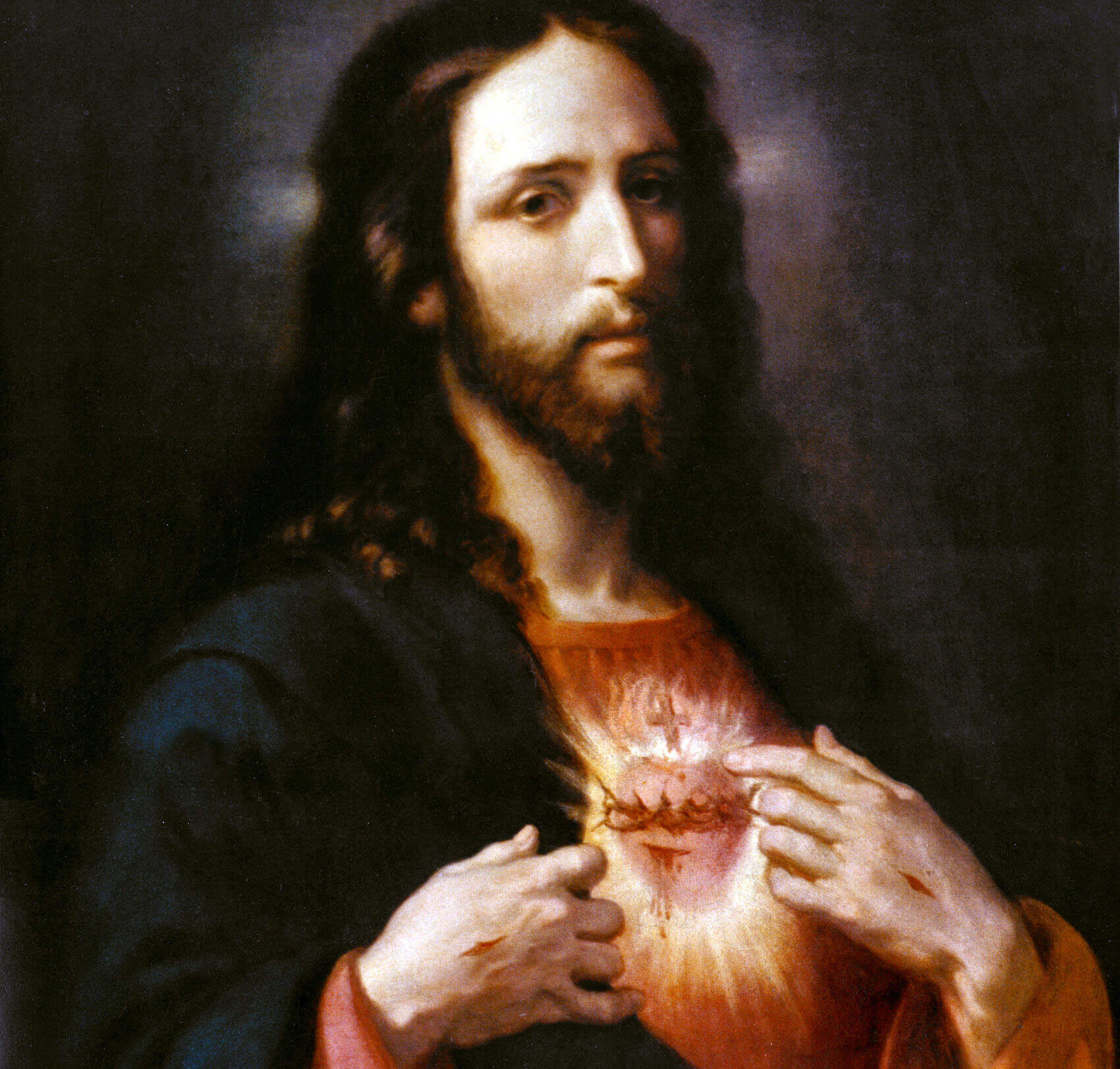
These three events may seem unrelated at first glance, but in the story of salvation, the common thread linking each one leads back to a beating heart: they are the heartstrings of God.
In Adam’s case, the Creator reached into his side as he slept and brought forth one of his ribs. Taking it, the Maker filled it with flesh and formed it into a woman. Awakening from his rest, Adam beheld in awe the first human female. Indeed, he rejoiced, saying: “This now is bone of my bones, and flesh of my flesh; she shall be called woman, because she was taken out of man.Wherefore a man shall leave father and mother, and shall cleave to his wife: and they shall be two in one flesh” (Gen 2:23-24).
God made sure that Adam would not remain alone, but made him a lifelong companion to help him in all his undertakings. Here, at last, Adam found someone who was like him.
In his Commentaries on the Whole Bible, author Matthew Henry wrote an astute observation on the remarkable and fitting creation of Eve:
“The woman was made of a rib out of the side of Adam; not made out of his head to rule over him, nor out of his feet to be trampled upon by him, but out of his side to be equal with him, under his arm to be protected, and near his heart to be beloved.”
In truest charity, God desired the highest good of love for His creatures. It cannot be coincidental that He used a bone made for protecting the heart not only to fulfill Adam, but also to emphasize how special Eve was.
This display of eternal affection reached its zenith on Calvary when the Son of God performed the greatest act of love for the sake of all men through the sacrifice of His life for our salvation. Although all this beauty was obscured by the violence of torturous execution…and joy was eclipsed by death-throes…and love-at-first-sight was later met with condemnation and threats…there are echoes of the past that are not only repeated with the sufferings of Christ, but brought to new fruition.
Following His crucifixion, Christ, like Adam, was also rendered unconscious, only this time in the awful “sleep” of death. Both the old Adam and the New Adam tasted death from a tree. Once Adam was given life, his side was opened. After Christ gave up His life, His side was opened, too. In both instances, a spouse emerges.
But while the old Adam placed the blame on his spouse for the fall of man, the New Adam took the blame for His spouse so that she might be redeemed. The blade thrust into Jesus’ side pierced his heart and out flowed blood and water. This outpouring from Our Lord is seen as a symbolic illustration of Holy Mother Church springing from her divine bridegroom. Water is recognized as an essential part of physical life, but spiritually, it allows us to become part of the Church through baptism and further unites us to Christ through its use in the Holy Sacrifice of the Mass, the sustenance of our souls. Blood highlights the life force that was shed on our behalf and stands as a reminder of the high price of redemption. With the Blood of the Savior, our sins are washed away. These sacraments are housed only within the Catholic Church, so we may only come to Jesus through His bride.
The parallels between these unions are subtle, yet unmistakable. Once again, this beauty in the Catholic Faith stems from the Heart of Divine Providence.
And how exactly might the important message of Sister Margaret Mary Alacoque to King Louis XIV fit into the enduring heartbeat of history?
For the first thousand years of Christianity, there seems to have been little attention given to the Sacred Heart. Doubtless those who knew the Saviour during His short time on earth would have held some commemoration of the sort, most especially His Blessed Mother; however, the rest of the Christian world appears to have been largely ignorant of such devotion, through no fault of their own. After all, Christianity was still in its infancy and there was much left to establish regarding church practices.
It was not until the 1100s that Christendom began to see something resembling a devotion to the Sacred Heart. St. Bernard of Clairvaux, St. Francis of Assisi, and soldiers returning from the first Crusades in the holy land began to share prayers and practices centered on the Passion of Our Lord, paying special attention to His five Precious Wounds—although even then, the precious Heart of our Redeemer was rarely at the center of these meditations.
Enter Sister Margaret Mary of the Order of the Visitation of Holy Mary. On June 16th, 1675, she received a private revelation from Our Lord asking her to promulgate a special feast day in honor of His Sacred Heart. Jesus said to her:
“I ask of you that the Friday after the Octave of Corpus Christi be set apart for a special Feast to honor My Heart, by communicating on that day, and making reparation to It by a solemn act, in order to make amends for the indignities which It has received during the time It has been exposed on the altars. I promise you that My Heart shall expand Itself to shed in abundance the influence of Its Divine Love upon those who shall thus honor It, and cause It to be honored.”
Our Lord then granted her visions of His pierced heart all aflame and encircled by a crown of thorns.
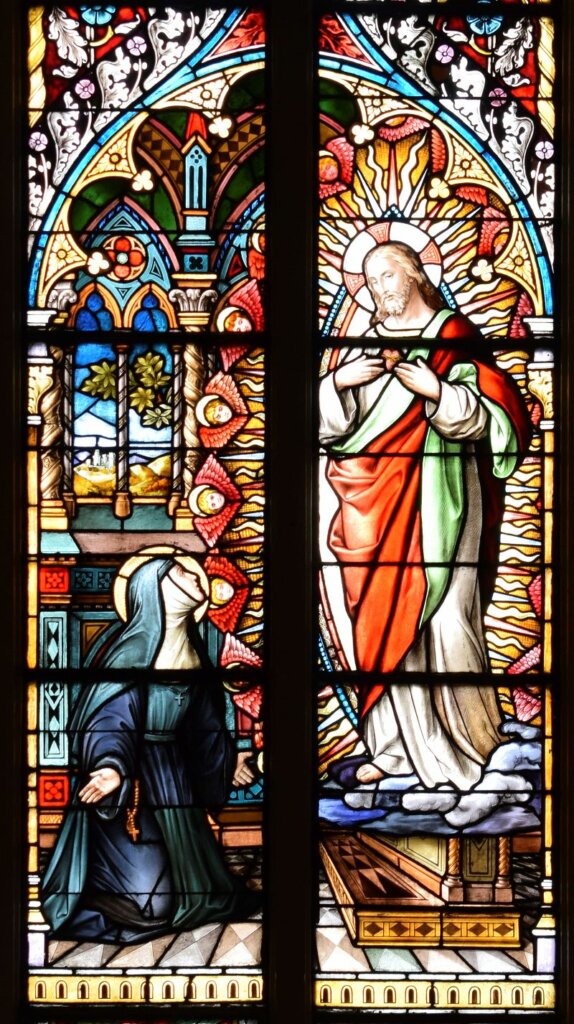
Christ made known to her the boundless love He has for all mankind and instructed Sister Margaret Mary on how to venerate His Sacred Heart,.
These venerations include participating in a holy hour on Thursdays and receiving Holy Communion worthily on the first Friday of every month.
In addition, He shared with her twelve promises made to all who venerate and promote devotions to His Sacred Heart:
1. I will give them all the graces necessary for their state of life.
2. I will give peace in their families.
3. I will console them in all their troubles.
4. I will be their refuge in life and especially in death.
5. I will abundantly bless all their undertakings.
6. Sinners shall find in my heart the source and infinite ocean of mercy.
7. Tepid souls shall become fervent.
8. Fervent souls shall rise speedily to great perfection.
9. I will bless those places wherein the image of my Sacred Heart shall be exposed and venerated.
10. I will give to priests the power to touch the most hardened hearts.
11. Persons who propagate this devotion shall have their names eternally written in my heart.
12. In the excess of the mercy of my heart, I promise you that my all-powerful love will grant to all those who will receive Communion on the first Fridays, for nine consecutive months, the grace of final repentance: they will not die in my displeasure, nor without receiving the sacraments; and my heart will be their secure refuge in that last hour.
Christ related to her that this devotion was to be shared with princes and kings, especially in her own nation. Our Lord’s chief desire was for King Louis to consecrate the entire French kingdom to His Sacred Heart and establish a chapel in order to foster this devotion to Him. In return, not only would the twelve promises be kept, but France would obtain numerous material and spiritual blessings.
While the devotion was eventually accepted and spread by the Church nearly two hundred years later in 1865, Louis XIV never fulfilled the requests brought to him. It is suspected that he imagined such a consecration would put him in an awkward spot should any disaster follow, which would then discredit him from both political and religious points of view. Perhaps the mighty monarch disdained being ordered about by an insignificant nun of low birth.
In any event, Jesus’ request was ignored. His successor, Louis XV, also did nothing. For 100 years the kings dismissed the notion. It was not until the time of the French Revolution that Louis XVI, his kingdom in shambles and his life in jeopardy, procured an act of consecration of his country to the Sacred Heart. The document was discovered nearly a century after his own death at the guillotine so that, if the consecration did take place, it was surely a private one.
It is reasonable to assume, however, that the king did make the consecration before he was killed, since the bloody revolution ended shortly after his death, sparing the rest of his country and subjects further suffering. Even after so many years of tardiness and delay, the poor people of France received mercy and tenderness from the Heart of God.
God’s Not-So-Hidden Motive
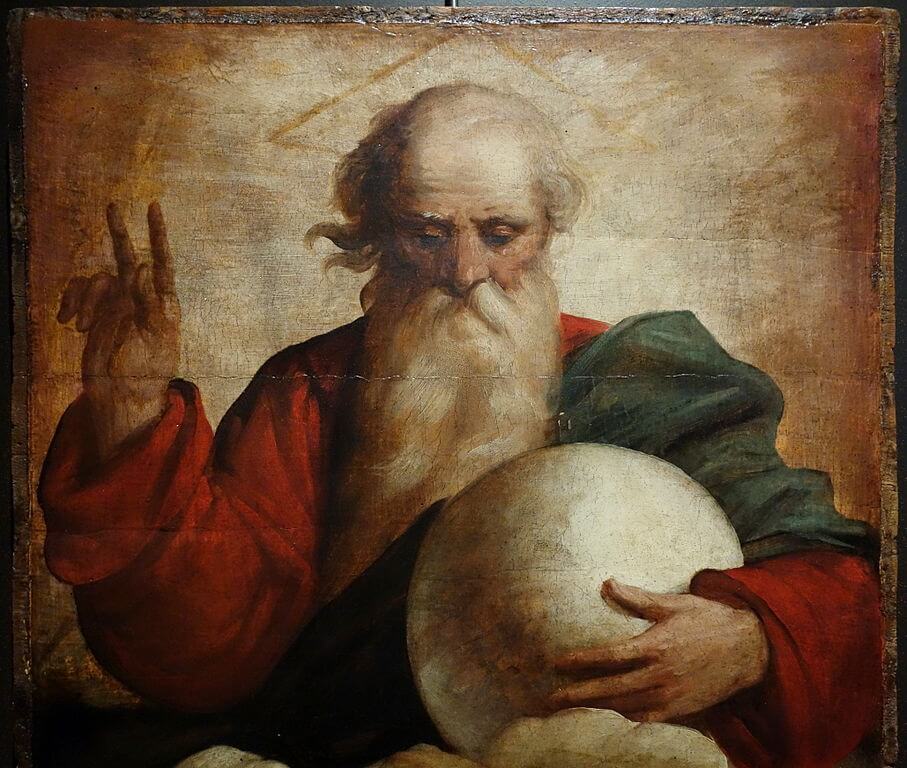
One can only marvel at the workings of God in His endless Love. The heart symbolizes many things, but all have a purpose and significance by Divine design. Physically, it may be merely a pump, one of several vital organs, but for centuries—including recent years—there have been paramount connections made between the operations of the human heart and emotional associations.
We see this, too, in the annals of salvation history. In the creation of Eve, God and man share and delight in the goodness, the beauty, and the joy of holy companionship. At the cross on Calvary, God and man are forever joined by Our Lord’s courage in the face of death, His self-sacrifice for our redemption, and His humble resignation to the Eternal Will of His Father.
Finally, within the sublime message and promises entrusted to Sister Margaret Mary, we behold God’s infinite patience and boundless charity for every human soul and, finally, the purest and most unifying love in all creation: the love of God.
The Feast of the Most Sacred Heart of Jesus is a precious chance for us, poor creatures that we are, to have a heart to heart with our Creator: to praise Him, to beseech Him, to keep Him company, and most of all, to love Him.
This month, Our Lord invites us to surrender our hearts to Him and renew our devotion to His All-Loving Heart. Thus, we can return to Jesus the love that He has gifted us and be united to Him always.
